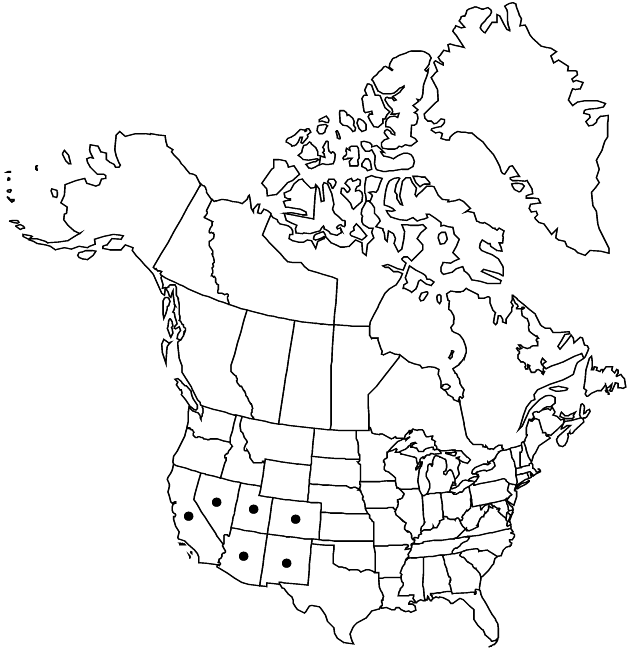Oxytenia acerosa
Proc. Acad. Nat. Sci. Philadelphia 4: 20. 1848.
IllustratedEndemic
Synonyms: Euphrosyne acerosa (Nuttall) Panero Iva acerosa (Nuttall) R. C. Jackson
Treatment appears in FNA Volume 21. Treatment on page 29.
Leaves: petioles 0–20+ mm; blades or lobes mostly 20–150 × 1–1.5 (–3) mm. Peduncles 1–3+ mm. Involucres 2–3+ mm. Phyllaries: outer 5–7 ± herbaceous, sericeous to strigillose, inner scarious to membranous, usually villous. Functionally staminate florets: corollas 2.5–3 mm. Paleae 1.8–2+ mm. Cypselae 1.5–2.5 mm. 2n = 36.
Phenology: Flowering Jun–Sep.
Habitat: Wet or seasonally wet, alkaline soils
Elevation: 100–2200 m
Distribution

Ariz., Calif., Colo., Nev., N.Mex., Utah.
Discussion
Selected References
None.
Lower Taxa
None.
... more about "Oxytenia acerosa"
introrse +
connate +
herbaceous +
scarious +
absent +
hirsute +
papillate +
paniculiform +
continuous +
decurrent +
lobed +
winged;ribbed;winged;ribbed +
1;15 +
stigmatic +
absent +
zygomorphic +
whitish +
absent +
monomorphic +
dimorphic +
villous +
1.5mm;2.5mm +
staminate +
linear;filiform +
straight +
distinct +
staminate +
proximal +
10;25 +
bisexual +
dispersed +
singly +
disciform +
indeterminate +
Present +
villous +
surrounding +
hemispheric +
conspicuous +
alternate +
cauline +
erect +
deltate +
herbaceous +
2-carpellate +
inferior +
attached +
anatropous +
villous +
spatulate;cuneiform +
membranous +
persistent +
falling +
absent +
tough +
thick +
absent +
connate +
persistent +
distinct +
falling +
Proc. Acad. Nat. Sci. Philadelphia +
1848 +
pistillate +
absent +
fertile +
paleate +
convex +
fibrous +
exalbuminous +
modifed +
2;3 +
alternate +
branched +
erect +
absent +
2-branched +
papillate +
Oxytenia acerosa +
Oxytenia +
species +
longer +
